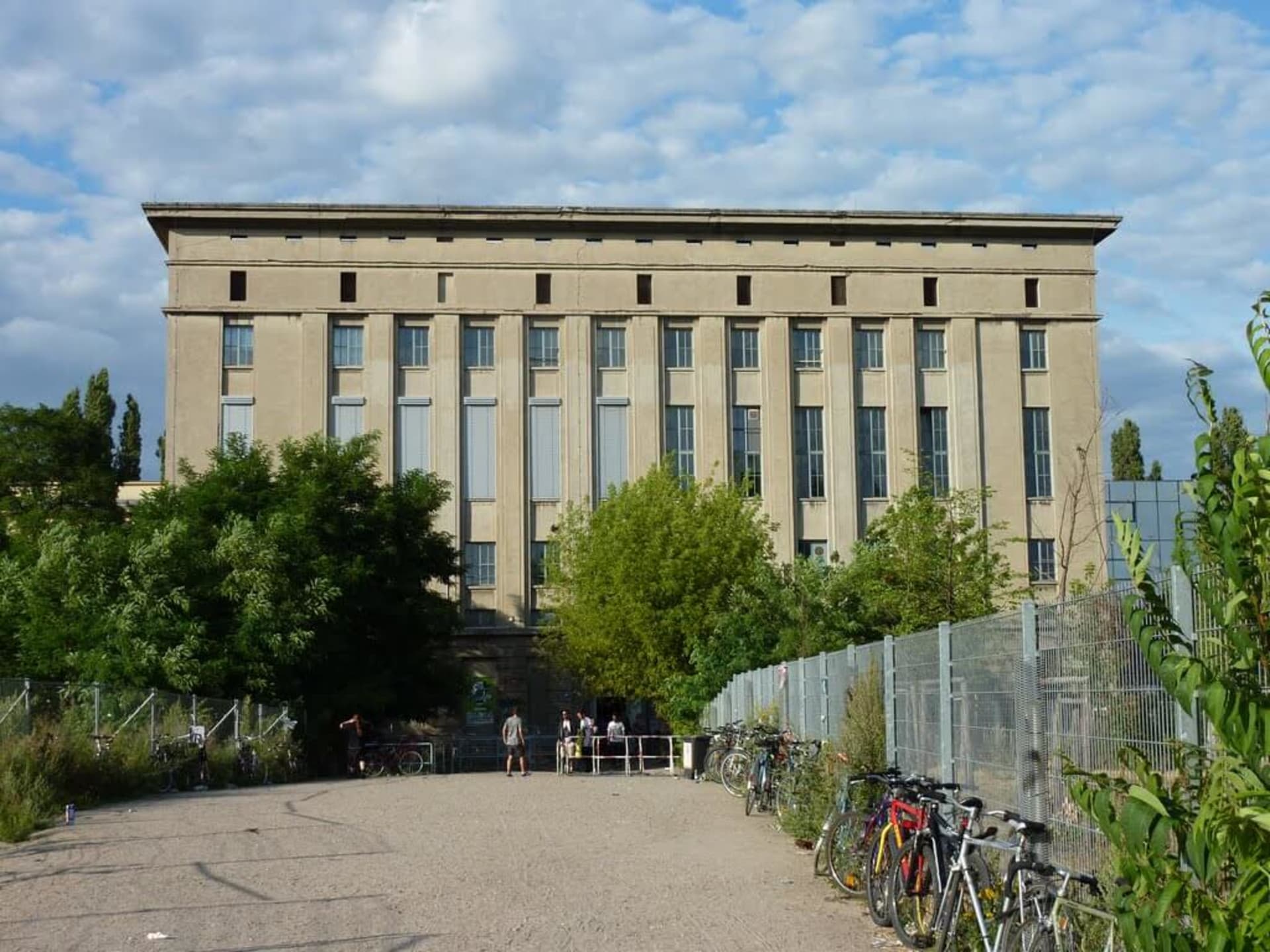
We Reviewed Berghain’s New Experimental Dance Floor, Säule
I have to admit up front: I was wary of Berghain’s new room Säule when it was first announced. I was ready to quickly dismiss it for invading the club’s chill-out area on its ground floor that was always my respite from the madness in the club above. But above all, I was struck by the fact that Säule is absolutely beautiful.
The space branches off from the side entrance to the venue’s men’s only gay sex club, Lab.Oratory, and is situated behind the former entranceway mural and directly facing the statue of the naked man by the main stairs leading up to the namesake dance floor. It seems more meticulously designed than both the main floor and its upstairs addendum, Panorama Bar. The balcony that snakes around Säule is spotted with stark wooden arches stacked to form minimalist picnic tables, and the glass and metal entablatures that hang above the bar and along the back of the dance floor give the room a feeling of being separate from the larger venue. The lighting is perhaps the most impressive facet of the room’s design. Thin metal bands embrace each of the massive concrete pillars that frame the dance floor and give off subtle monchromatic hues that fluctuate with the music. Both the ceiling and the wall behind the DJ booth cast sustained red lights that bring the room’s exposed piping and countless industrial details into sharp relief.
Though Säule utilizes many of the same architectural motifs as its sister space upstairs, its open floor plan and its conspicuous absence of dark nooks are clearly meant to transform it into a more traditional club space conducive to listening and dancing only. Its modular DJ booth even doubles as a stage: once the CDJs are moved to the side, the platform can hold a full-piece band, making the performance space more accommodating for live acts and multi-person outfits than Berghain, which hosted weeknight concerts from bands in the past.
The main acts booked for Säule’s opening night—Alessandro Adriani, Natalia Escobar, Yves Tumor and Deena Abdelwahed—represent a more obscure strain of electronic music that have remained relatively sequestered in Berlin’s underground. If their dark dub and sludgy atmospherics are any indication of the programming to come, then Säule will be treated as a space for sounds that Berghain hadn’t yet found a way to seamlessly integrate into its usual programming. Experimental electronics of all kinds were often overlooked, relegated to specialized club nights like Leisure System or, in the case of more techno-related styles of EBM, booked on the main dance floors. But the last approach often resulted in confused and unsatisfied dancers or worse—it forced the DJs to conform to the club’s signature style of normative techno. So Säule makes me wonder, as I did when its opening was announced, about the future of the experimental scene that its owners are capitalizing on as well as that of the club itself.
Since it became Berlin’s most renowned nightclub, Berghain has become a monolithic presence that heavily influences the city’s mainstream club culture. It now faces the challenge of simultaneously accommodating the tourists drawn in by its reputation and the devoted community of longtime patrons who made it special early on. 12 years after it opened in 2004—actually, 19, if you count its original location Ostgut—the club also must reckon with pressure to keep up with a changing musical landscape and the natural ebb and flow of people’s taste. Meanwhile, new competitors have acted as garrisons for avant-garde styles of electronic music. A few years ago Berghain’s predecessor as Berlin’s most famous techno club, Tresor, opened a 200-person capacity former battery room in its complex called OHM. The basement of Urban Spree, a dingy cellar with doorframes that tall men are forced to duck under as they walk from one derelict boiler room to another, has played a similar role in booking challenging music.
Such adventurous electronic music has gained popularity in recent years by way of creative flag bearers like Silent Servant, record labels like PAN and the success of experimentally minded festivals like Kraków’s Unsound and CTM, which has hosted some of its programming in Berghain. Around the same time Tresor started to present the rebooted version of the experimental festival Berlin Atonal, day-long minimalist concerts and ambient sleepovers in its Kraftwerk space. Säule’s programming suggests that the avant-garde’s increasing trendiness has not escaped Berghain’s all-seeing eye.
In this context, the concurrent arrival of Phase Fatale’s Anubis EP on Unterton, the Ostgut’s sub-label that’s generally devoted to acts that deviate from its usual formula, does not seem like a coincidence. The young EBM producer has DJed at Berghain six times in the last year and has strong ties to the labels that are moving from the basements of Urban Spree to Säule’s inherently more populist stages, like Adriani’s Mannequin Records. While hearing such challenging sounds appreciated in an institution like Berghain is a welcome departure from the club’s typical fare, part of me wonders what will happen to the smaller clubs that are now forced to compete with Berghain in booking the types of music that used to fly below its radar and out of its purview.
Now that Säule has made a staunch commitment to this vein of experimental programming, is the scene over? Probably not. But it does portend a tidal shift in the way that this music will be consumed and appreciated by the wider public—as well as a sea change in what kinds of music Berghain will book and bring to the Berlin club scene’s (metaphorical) center stage and which are forced back underground. While it’s tempting to admonish the Berghain Corporation for taking bookings away from the city’s smallest clubs, it’s also possible that the striking and highly versatile new Säule space could help to elevate the new wave scene and other non-techno genres in a unique and positive way.
Published March 24, 2017.
